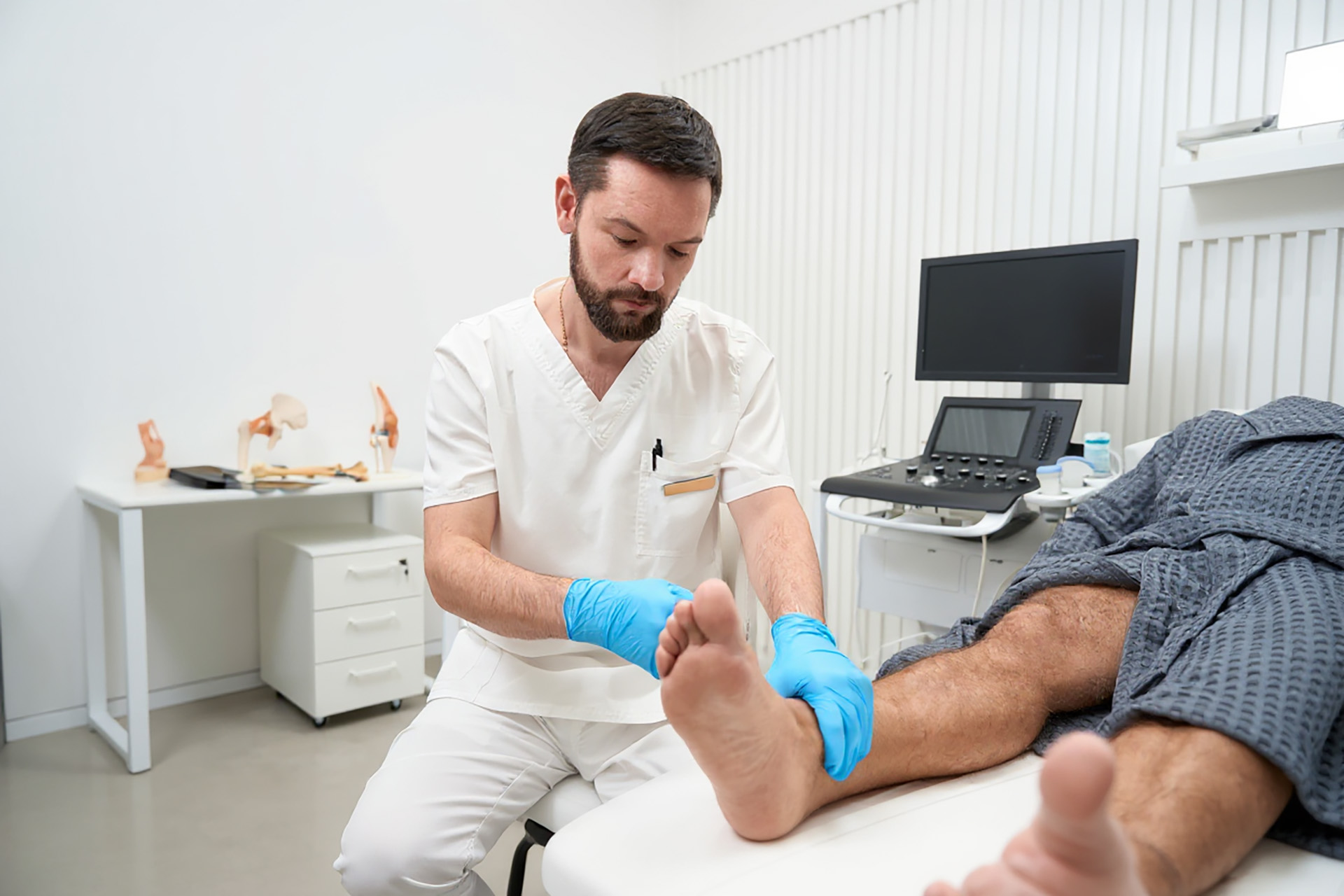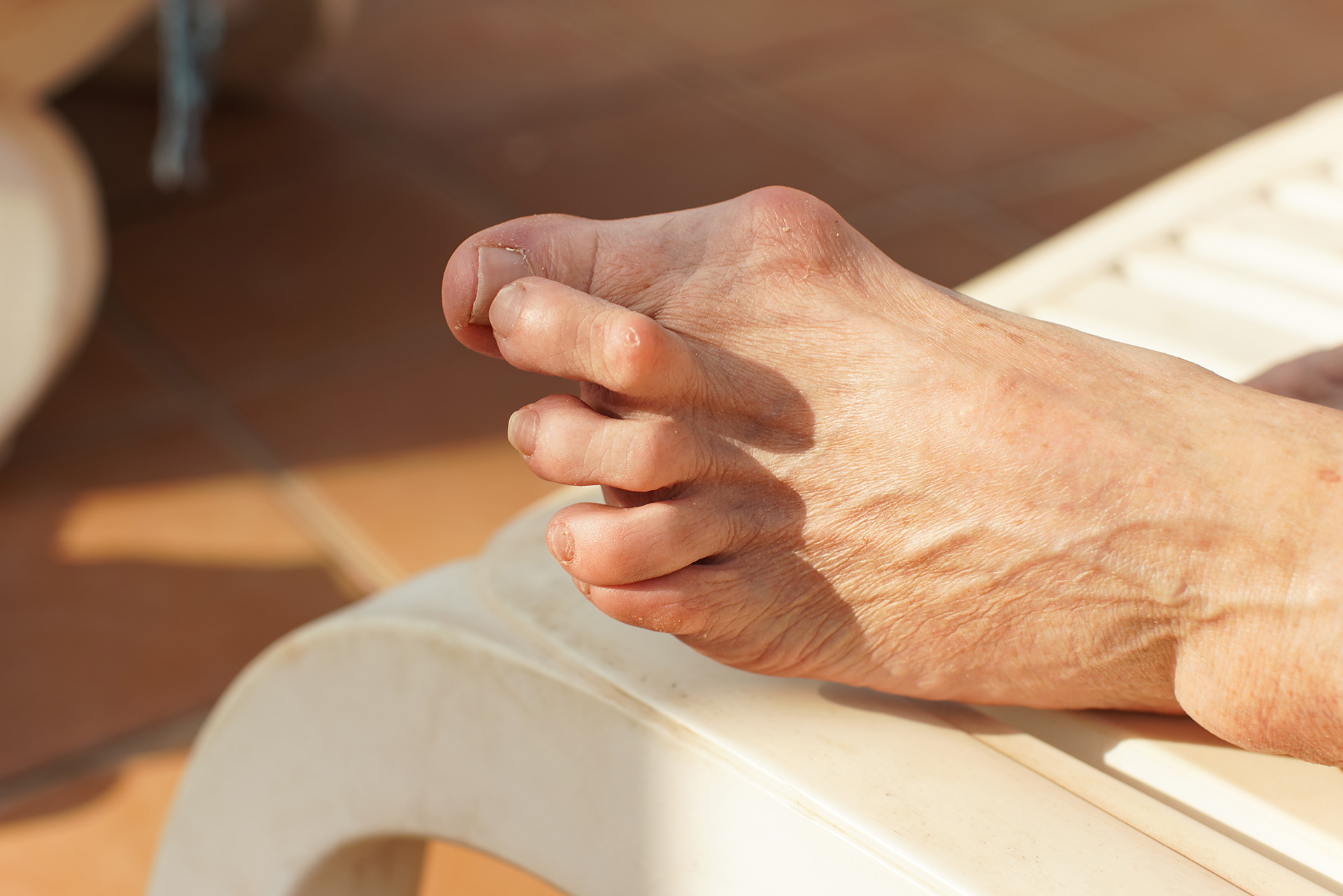Tarsal tunnel syndrome, a condition less frequently discussed yet crucial in foot health, arises from the tibial nerve compression within the tarsal tunnel – a narrow passageway inside your ankle. This tunnel, a vital conduit, houses arteries, tendons, veins, and nerves integral for full foot functionality.
Tarsal tunnel syndrome symptoms, though relatively rare, demand attention, especially among athletes engaged in high-impact sports like sprinting, where the risk is markedly heightened.
Addressing Tarsal Tunnel Syndrome Through Podiatry
When it comes to tarsal tunnel syndrome treatment and management of the condition, podiatrists deploy a range of conservative treatment strategies to alleviate symptoms and steer patients towards recovery. These strategies bring a tailored approach that addresses the unique needs and causes of each individual’s condition.

Rest is particularly crucial for those whose tarsal tunnel syndrome stems from athletic activities. Rest allows the inflamed area to heal, preventing further nerve irritation. Immobilisation methods such as bracing or taping can effectively stabilise the area, relieving movements exacerbating the condition. This strategy helps in reducing inflammation and preventing the condition from worsening.
Orthoses, or custom-designed insoles, are significant in managing tarsal tunnel syndrome, especially for patients with structural issues like flat feet. Orthotics work by redistributing foot pressure more evenly, thus alleviating nerve strain. They also support the arch, helping to correct any misalignment that might be contributing to the syndrome.
A vital component of the treatment plan is physical therapy for tarsal tunnel syndrome, which focuses on restoring flexibility, enhancing the range of motion, and building strength. Physical therapy exercises rehabilitate the affected foot and prevent future recurrences by strengthening the surrounding musculature.
Each treatment modality plays a role in the comprehensive care plan crafted by podiatrists, depending on the specific patient’s condition. In cases where conservative treatments don’t provide adequate relief, or in more severe instances of tarsal tunnel syndrome, advanced interventions such as corticosteroid injections or even surgery may be considered. The ultimate goal is to relieve symptoms, restore function, and improve the overall quality of life for those affected by this condition.
A Closer Look Inside the Tarsal Tunnel
The tarsal tunnel’s anatomy is complex yet elegant. Coated by a thick ligament designed to shield its contents, it includes the vital tibial nerve, responsible for sensation and motor control in the lower leg and foot. Tarsal tunnel syndrome manifests when this nerve is compressed, often by the very ligament meant to protect it, leading to discomfort and functional impairment.
Tarsal tunnel syndrome causes include overuse as the predominant issue, with more than 40% of sufferers reporting a history of foot-related injuries, such as ankle sprains. These injuries can alter the ligament’s structure, leading to nerve compression. Athletes in sports involving rapid pivoting or falls face a higher risk due to the increased likelihood of acute trauma to the ankle.

The most common sports leading to tarsal tunnel syndrome include:
- Running: The repetitive impact on the feet and overpronation can strain the tarsal tunnel area.
- Soccer: Frequent direction changes, running, and impact from striking the ball can stress the ankle and foot.
- Basketball: Sudden stops, jumps, and direction changes put significant pressure on the ankles and feet.
- Tennis and Racquet Sports: Similar to basketball, quick lateral movements and sudden stops can strain the tarsal tunnel.
- Ballet and Dance: The extreme foot positions and repetitive movements can cause compression in the tarsal tunnel.
- Gymnastics: Like ballet, the foot positions and impact from landings can lead to the condition
Another notable cause is flat feet. The absence of a normal arch can cause the leg to tilt outward, straining the nerve in the ankle. Systemic conditions like diabetes and arthritis, known for their inflammatory effects, can also precipitate tarsal tunnel syndrome by causing swelling that compresses the nerve.
Prevention and Awareness Is the Key to Managing Tarsal Tunnel Syndrome
Understanding the causes and risk factors is essential in preventing and managing tarsal tunnel syndrome. Athletes and individuals with a history of foot injuries or conditions predisposing them to inflammation should be vigilant. Preventive measures include proper foot support, especially for those with flat feet, and exercises to strengthen and stabilise the ankle and foot.
While tarsal tunnel syndrome may not be as widely recognised as other athletic injuries, its impact on mobility and quality of life can be significant. Awareness and proactive management strategies and tarsal tunnel syndrome treatment are vital for individuals at risk, particularly athletes in high-impact sports. By understanding the intricacies of this condition, one can take practical steps towards prevention, ensuring optimal foot health and function.
Common Symptoms of Tarsal Tunnel Syndrome
Tarsal tunnel syndrome, a nerve-related affliction, presents distinct and telling symptoms. Individuals with this condition typically experience tingling, burning, numbness, and pain – classic nerve disturbance indicators.
However, what sets tarsal tunnel syndrome apart is the localisation of these symptoms, primarily on the inside of the ankle and the underside of the foot, tracing the path of the affected nerve.
For athletes, these symptoms are not just discomforts; they pose a significant threat to performance. Continued activity can exacerbate nerve compression, potentially leading to irreversible damage and impacting the foot’s flexibility, balance, and strength.
Tailoring a Plan for the Management of Tarsal Tunnel Syndrome
Diagnosing tarsal tunnel syndrome begins with an in-depth consultation to discuss the onset, nature and severity of your symptoms, seeking to understand the unique characteristics of your condition. This patient history is crucial in forming a preliminary assessment.
A physical examination is conducted, focusing on the affected area. A key component of this examination is Tinel’s Test, where the podiatrist taps over the nerve to elicit a response – a technique that can indicate nerve irritation or compression.

Each case of tarsal tunnel syndrome and its treatment are unique. The information gathered from these diagnostic procedures enables podiatrists to craft a personalised treatment plan. This plan could range from conservative management, like physical therapy and orthotics, to more invasive interventions, depending on the severity and specific nature of the nerve involvement.
Understanding and addressing tarsal tunnel syndrome requires a nuanced approach. With their specialised knowledge and diagnostic tools, podiatrists play a pivotal role in identifying the syndrome and charting a course for effective treatment tailored to each individual’s needs. Early and accurate diagnosis is key to preventing progression and ensuring optimal recovery and foot health.
Approach To Manage Tarsal Tunnel in Athletes
Repetitive motions and constant pressure, synonymous with sports like football, basketball, and running, set the stage for tarsal tunnel syndrome, placing athletes in these disciplines at an elevated risk. In these high-impact sports, where every sprint, jump, and dash counts, athletes push their bodies to the limit.
This quest for athletic glory has risks, particularly to the feet and ankles. Tarsal tunnel syndrome is a familiar yet often overlooked adversary, a condition rooted deeply in the foot’s anatomy. It emerges from acute injuries – those sudden, jarring moments that every athlete dreads – or the less dramatic but equally damaging cumulative strain of overuse.
Safeguarding foot and ankle health entails a multifaceted strategy. It starts with the foundation of an athlete’s gear – the right footwear. Choosing shoes that offer optimal support and cushioning can make a difference in distributing pressure and reducing impact.

But it’s not just about the external; internal strengthening is equally crucial. Regular dynamic stretching exercises enhance ankle flexibility and mobility as a buffer against sprains that could lead to or exacerbate tarsal tunnel syndrome.
Additionally, incorporating routine checks with a podiatrist into an athlete’s schedule can offer personalised insights and preventive strategies, keeping them a step ahead. Consulting a podiatrist at the first sign of discomfort or abnormality is wise.
A podiatrist can offer expert advice tailored to your needs, ensuring your feet and ankles remain in top condition. They can guide preventive measures, appropriate footwear, and therapeutic exercises to keep you active and injury-free.







